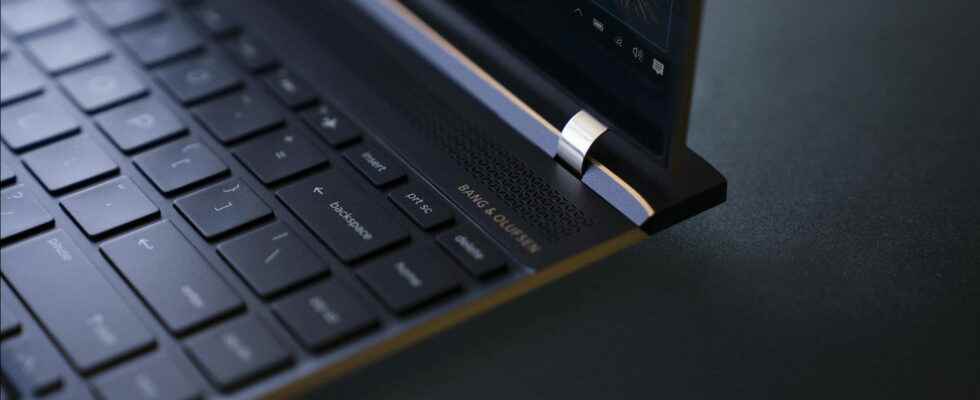Whether they are called “2-in-1”, “convertible” or “transformable”, hybrid laptops all have one thing in common that distinguishes them from “classic” laptops: they all have a touch screen that can be folded down completely, which allows them to be used in tablet mode, with fingers or with a stylus, in “tent” mode or even in “turned over” mode, the keyboard turning its back on the keyboard, which is practical for displaying a presentation or watching a video. And, of course, they can still be used as “normal” laptops!
If these chameleon computers have been on the rise for a few years, it is because they combine the best of both worlds, by combining the ease of use of a tablet with the power and versatility of a laptop PC. classic. They are also increasingly user-friendly thanks to better support in Windows 10 and 11 than when they first appeared in 2012 with Windows 8.
There are many models available on the market but the choice is easy to make because the first question to ask yourself is: “what screen size do I need?”. From the answer will come the weight, the thickness and therefore the possibility of taking the machine with you or not on the move. In addition to the usual criteria for classic PCs (screen definition, type and power of the processor, amount of RAM, richness of interfaces, etc.), there are particularities linked to their convertible aspect. Some hybrid laptops are sold with a stylus or, failing that, their touchscreen supports it. Convenient to work directly on the touch screen! Autonomy is also an important or even critical point in certain nomadic uses.
The majority of current models use an IPS-type LCD panel which provides wide viewing angles with quite satisfactory contrast and brightness. Some models do even better, however, by integrating an Oled panel, a technology where each pixel produces its own light, which avoids a global backlight system. Concrete advantages of OLED: almost absolute blacks and extremely vivid colors, with almost infinite contrasts (approximately 1,000,000:1), very far ahead of LCD panel screens (between 700 and 1600:1), and a positive impact on autonomy, black does not consume energy. Ideal for viewing in dark mode.
Note that there are also several screen formats. In addition to the traditional 16:9 format, some models have a 16:10 or 3:2 screen. With a screen gaining a few lines in height, these offer a more comfortable experience and better suited to web browsing as well as to working on office documents. This is for example the case of Microsoft’s Surface range, which represents its hybrid laptops and adopts the 3:2 format.
As for the main processor (CPU), there are similar references to classic laptops, with the choice between Intel and AMD. The first now offers its 11th generation of Core processors which still coexists with some tenth generation chips. Main difference between the two: to put it simply, the graphics part which – even if it cannot claim to match the performance of dedicated graphics cards – has taken the hair of the beast.
At AMD, the Ryzen 5000 chips logically succeed the 4000. They show increased performance because the architecture has further evolved. And this, without giving up on autonomy, on the contrary, the 5000 take up the good bases of the previous generation to magnify them.
As for the graphics circuit, hybrid laptops rarely offer a choice and it is generally necessary to be content with the graphics part integrated into the processor (CPU) which is becoming more and more efficient. Do you plan to use applications requiring 3D acceleration (for CAD or architecture, for example)? Prefer one of the few models with a dedicated graphics circuit, including those stamped “gamer”.
For the rest of the equipment, the classic rules apply. Thus, today it is worth aiming for 16 GB of random access memory (RAM) to work comfortably with Windows 10 or 11. 8 GB? The bare minimum! Ditto for storage, obviously in SSD: 128 to 256 GB is enough for classic use, but 512 GB or 1 TB is preferable when you have many heavy files (videos) to keep. On the interface side, the number and variety must be favored: USB 3.2 for classic peripherals and USB keys, USB Type-C possibly in Thunderbolt 3 or 4 for fast transfers with a large number of devices, Wi-Fi -Fi 6 (802.11ax standard) and Bluetooth 5.0 for high-speed wireless communications, HMDI for connecting an external display, etc.
Last but not least, autonomy is an essential criterion if you plan to use a hybrid in nomadic mode all day long, far from a power outlet. Many models last 8 hours of continuous use, the best around 15 hours. In this regard, the figures put forward by manufacturers are often optimistic. But, in the absence of tests in real situations, they give an order of magnitude.
